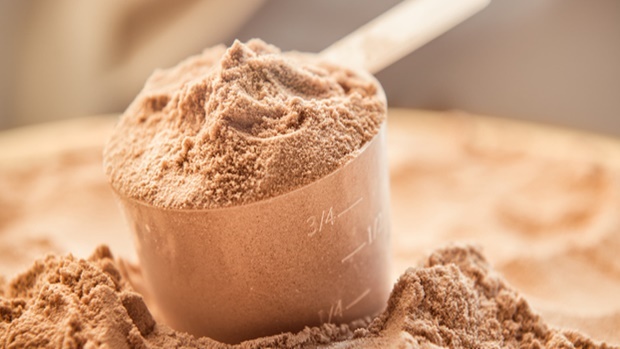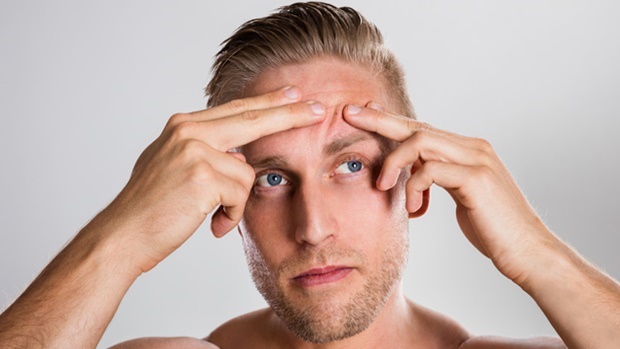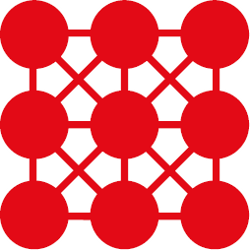After pumping iron, you want to give your muscles the fuel they need to repair the tiny tears that exercise causes. That’s what’s responsible for muscle growth.
Read more: 10 things every guy should know about protein powder
And if you’re pressed for time after your sweat session, you probably reach for the easiest, most accessible source of protein you can find. For many guys, that’s the protein shake but if you’re been drinking up on the regular, you might be noticing an unintended consequence that has nothing to do with your muscles: an acne breakout.
How can whey protein cause acne?
That’s because if your shake contains dairy – whether in your protein powder or if you use actual milk as a mixer – it could be making your face break out. Milk contains two proteins: casein and whey. Those are the proteins that are pretty common to see in many protein powders too. Whey in particular seems to be a particular culprit, says Dr Meghan Feely, a board-certified dermatologist in New York City. Whey increases the production of a hormone called insulin – like growth factor 1, or IGF-1.
“Insulin increases the production of sebum, which is associated with the development of acne,” she says. It also can trigger the production of androgens, or hormones that work by overstimulating oil glands. This can clog up your pores, possibly leading to breakouts, says Dr Rajani Katta, clinical assistant professor of Medicine at Baylor College of Medicine. What’s more, the milk proteins can mess with your ability to process blood sugar efficiently.
Read more: 5 hidden causes of acne
This can cause inflammation in your body particularly in your skin, says dermatologist Dr Whitney Bowe, author of The Beauty of Dirty Skin. This triggers an increase in sebum, the oil produced in your sebaceous glands, leading to acne. It’s also possible that the added sugars in many whey or protein powders can be a culprit, since they can also increase IGF-1 levels. “For those who are prone to acne, I definitely recommend avoiding shakes that have added sugars or a high carbohydrate load,” says Dr Katta.
What you add to your protein shake can make breakouts worse
What you choose to mix in your shake may also play a role in your acne breakouts. If you’re adding skim milk, well, you might be compounding the problem you’re already getting with the whey and casein proteins. Skim milk contains extra milk proteins compared to regular milk, which are added to improve its taste and thickness. “You might think picking a fat-free option is the health-conscious thing to do, but skim milk actually contains more milk proteins than higher fat milk options,” says Dr Bowe.
Read more: Your full guide to whey protein supplements
How to deal with protein breakouts
So, what should you do if you’re breaking out after drinking up? If you suspect your protein shake may be the cause of your acne, try eliminating it from your diet. “Take a holiday from protein shakes containing whey for a few months and see if your acne improves,” says Dr Feely. You can try shakes made with dairy-free options like pea protein, hemp, or collagen protein instead, says Dr Bowe. And make sure you’re getting enough protein from whole food sources too. But even if you’ve been noticing breakouts, it might not just be your protein shake that’s responsible: Your entire workout routine may be to blame.
“Athletes may experience acne flares from re-wearing athletic wear, using a dirty towel, or sharing helmets and other protective gear, as bacteria, oil and dead skin cells may clog pores,” says Dr Feely.
Read more: 5 nasty contagious skin conditions you can pick up at the gym
To help avoid acne flares, wear moisture-wicking, loose-fitting clothing, and hit the showers right after your workout so you don’t give bacteria and sweat the chance to get trapped and sit on your skin, she says. And wash up with a non-comedogenic cleanser, preferably one with salicylic acid to unclog your pores.
If that doesn’t calm your breakouts, you should loop in your dermatologist. He or she can help you find an acne treatment plan that works for you.
This article was originally published on www.menshealth.com
Image credit: iStock






